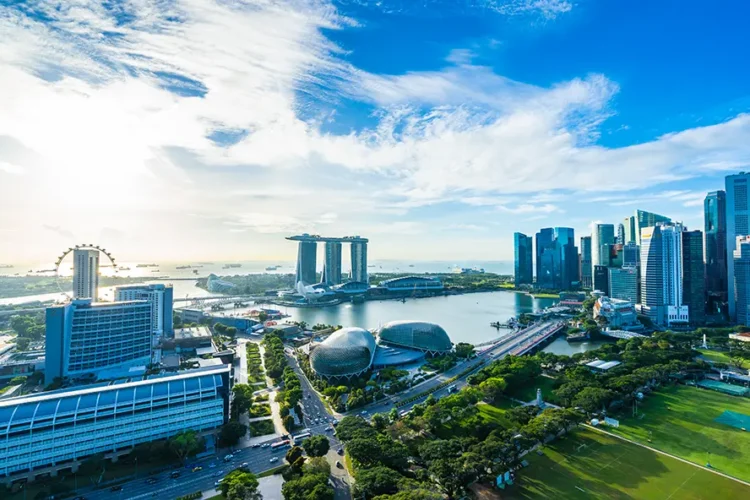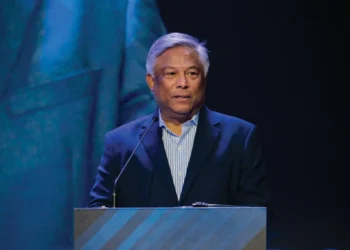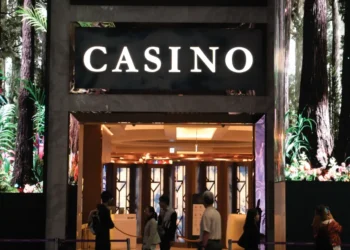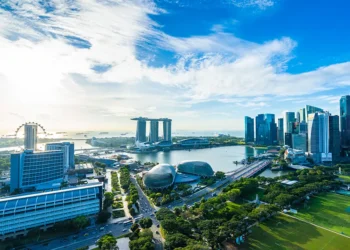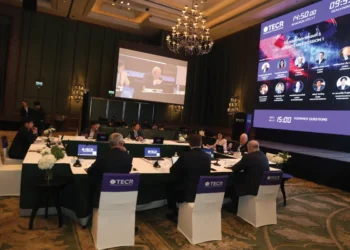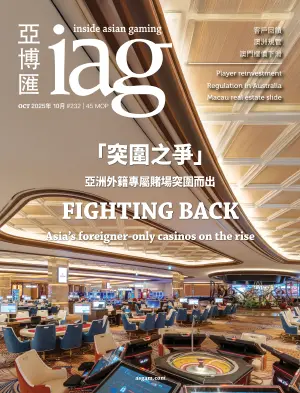This article will examine the process Singapore went through when the government announced in 2004 that it was contemplating legalizing casinos, and the public sentiment to this and how the government sought to explain its intended management of the dangers of problem gambling. It discusses the safeguards which the government proceeded to put in place to address problem gambling and to minimize social costs, and whether these measures were sufficient, and if not, what further measures were added over time. It considers why Singapore can be used as a shining example to countries like Thailand who are mulling over legalizing casinos amidst significant public concerns and opposition, and explains how the Thai public’s disquiet and anxiety can be allayed by reference to what Singapore has done and achieved with its experience in establishing world-leading integrated resorts in Marina Bay Sands and Resorts World Sentosa.
Introduction
Singapore’s journey from a gambling-averse society to a global casino destination is a case study in policy innovation, public engagement, and regulatory rigour. Its experience with legalizing casino gambling is especially instructive for countries like Thailand, where the prospect of introducing Thai Entertainment Complexes which include casinos has been met with public anxiety and moral debate. This article provides an evidence-based account of Singapore’s process, the evolution of its Responsible Gambling Framework (including the Responsible Gambling Code of Practice and conditions for exempt operators), and the empirical assessment of these measures, drawing on a post-casino establishment study conducted by a university applied research team. The analysis concludes with lessons for Thailand and a roadmap for allaying public concerns.
I. History of Casino Gambling in Singapore
When the founder of Singapore Sir Thomas Stamford Raffles landed in Singapore in January 1819, the local population was already engaged in gambling activities ranging from betting on cock fights to card games. Illegal gambling was rife. Raffles was a strong opponent of gambling, and sought to abolish it in Singapore. Soon after he signed the Treaty of Friendship and Alliance with Temenggong Abdul Rahman and Sultan Hussein Shah of Johor to grant the British East India Company the right to establish a trading post in Singapore, Raffles entrusted Lieutenant-Colonel William Farquhar, the first Resident of Singapore appointed under the Treaty, with the administration of the new settlement . But with a shoestring budget to establish a trading port from what was essentially a fishing village with a population of about 200 , and in order to generate much-needed funds for the new settlement, Farquhar went against Raffles’ instructions and introduced a tax system which granted monopoly rights to run gambling dens in Singapore . When Raffles returned to Singapore in October 1822, he was shocked at the extent to which Farquhar had deviated from his original instructions as to the administration of Singapore. He removed Farquhar and abolished licensed public gambling by way of a regulation which he himself drafted. That was Regulation IV of 1823, which prohibited gaming-houses and sought to suppress the vice of gaming in Singapore. Raffles then appointed John Crawfurd as the second Resident in Farquhar’s place. Within just 3 months, Crawfurd dismantled Regulation IV of 1823, and restored legalised gambling in Singapore through a highly profitable and a regulated system of licensed gambling houses and gambling taxes on operators and winnings. Crawfurd was a shrewd and practical man who focused on increasing government revenue and promoting free trade. He was of the view that gambling amongst the Chinese and Malays could not be fully eradicated, as the practice of gambling was already deeply prevalent among the two races, and was viewed as harmless amusement, just like the consumption of wine and spirits. His view of wise legislation was that what cannot be prevented ought to be regulated: “ The surest means of limiting and controlling this vice is to place it under a strict system of license … to make the practice of it as expensive as possible to those who are determining to indulge in it, but without driving them to the resource of a clandestine place.”
The period of Crawfurd’s administration of Singapore from 1823-1826 saw a rapid increase in its population, trade and revenue. However, legalized gambling had brought about a rise in social problems such as addiction, suicides and crime in Singapore. In 1827, one year after Crawfurd’s term as Resident ended, the government decided that gambling was an immoral activity after all, and in 1829, shut down all licensed gaming houses in Singapore. This produced three effects. First, gambling activities were driven underground, and illegal gambling dominated the gambling industry. Secondly, it resulted in corruption amongst numerous policemen who accepted bribes to turn a blind eye to the operation of illegal gambling dens . Thirdly, it ironically resulted in a proliferation of gaming houses in Singapore , due to a lack of enforcement of the laws prohibiting gaming houses. These illegal gaming houses were often operated or protected by secret societies , whom the police struggled to control.
When Singapore became a self-governing state in 1959, many of the gambling dens were once again shut down, and various legislation enacted to suppress gambling. For example, in 1961, the Common Gaming Houses Act was passed to suppress illegal common gaming houses, public gaming and public lotteries, with certain lotteries and gaming exempted from the Act – such as lotteries offered by state operator Singapore Pools. Betting on horse races with an exempt operator the Singapore Turf Club was also allowed. However, casinos were strictly prohibited, as the Singapore government feared increased addiction, the impact on low-income groups, and the erosion of family values. In 1965 and 1967, there were proposals to establish casinos offshore, first on Pulau Sejahat and then on Sentosa . These suggestions were ultimately dismissed by the Government on the basis that casinos would corrupt morals and bring about undesirable social consequences. In 1970, the Hong Kong King of Gambling Stanley Ho proposed building a casino in Singapore. This was also rejected, with then-Prime Minister Lee Kuan Yew famously stating, “No, not over my dead body.”
The issue of allowing casinos to operate in Singapore resurfaced in 1985 during a period of economic recession. Despite the potential for much-needed economic gains, the government again decided against legalizing casinos, maintaining that the social dangers outweighed any possible financial benefits. Then-Prime Minister Goh Chok Tong reiterated, “There will be no Casino, as long as I am PM” .
In 2001, another economic recession in Singapore prompted the formation of the Economic Review Committee, which was tasked with re-examining Singapore’s economic strategies. Undaunted by past rejections by the government, the committee proposed legalizing casinos to promote tourism. Lee Hsien Loong, then Deputy Prime Minister and Finance Minister, rejected the proposal, stating that “… the social dangers outweigh potential revenues from such a move…” .
II. The 2004 Casino Legalisation Debate: Process and Public Sentiment
Three years passed, and Lee Hsien Loong became Singapore’s third Prime Minister on 12 August 2004. Just ten days later, in his inaugural National Day Rally speech, the new PM Lee dropped a bombshell: The government was considering legalising casinos as part of a plan to establish two Integrated Resorts (IRs). The rationale was economic – Singapore was losing tourism competitiveness to other counties in the region, and the IRs would bring about some 35,000 jobs, investment and a revitalised leisure sector. In the three months that followed this monumental announcement, Ministry of Trade & Industry officials undertook overseas study missions, while the Singapore Tourism Board were instructed to test commercial interest in the IRs while social sentiment was being gauged.
The Prime Minister’s announcement triggered a nationwide soul-searching. A six-month public consultation process followed. Religious bodies, civil society, Non-Governmental Organizations, academics and the general public were engaged, with more than 700 letters and e-mails received. National polls showed that roughly half the population acknowledged economic benefits but a majority feared social costs, voicing deep fears about the erosion of social values, the spectre of gambling addiction, and the potential for crime and family breakdown, leading ultimately to self-destruction of the Singaporean society.
III. Explaining and Managing the Dangers of Problem Gambling
In March and April 2005, robust Parliamentary debates on the Prime Minister’s announcement took place. The ruling People’s Action Party lifted the party whip to allow MPs to speak freely based on their conscience, given the moral complexity of the subject matter. While some MPs asked for a national referendum, Prime Minister Lee rejected this as he felt that policy could not be outsourced by the Government to the people, and pointed out that in any event, legalized gambling already existed in Singapore.
A prevalent concern that arose in the debates on the IRs was problem gambling, which has detrimental societal and familial impacts. During the 2005 Singapore Parliamentary debates on the IRs, Nominated MP Dr Tan Sze Wee cited studies linking problem gambling with domestic violence, highlighting the emotional, mental and financial strain inflicted on families. Research has also shown that in Asian societies, the extended family often bears the burden of a problem gambler, amplifying the negative impact due to strong collective responsibility ethics. Apart from domestic violence and family breakdowns resulting from gambling addictions, there is also a strong possibility for persons with gambling problems to turn to crime to finance their addictions. Most notably, the 2004 case of Mr Chia Teck Leng, the former finance manager of Asia Pacific Breweries, brought the severity of problem gambling to light. He was sentenced to more than 42 years in jail for embezzling more than $110 million as he became increasingly entrenched in debt while gambling in Macau and Las Vegas casinos. Further, a report published in April 2005 by the Ministry of Community Development, Youth and Sports (now known as the Ministry of Culture, Community and Youth) stated that 2.1% of Singaporeans are likely to become problem gamblers, which was a higher percentage than Macau and Hong Kong.
Other politicians also expressed concerns about the impact of legalizing casinos in Singapore. Minister for Community Development, Youth & Sports Dr Vivian Balakrishnan said: “All forms of gambling have the potential to destroy the lives of those who become addicted. This is a clear and present danger… Every Singaporean destroyed by gambling is one too many.”, while Minister in the Prime Minister’s Office Mr Lim Boon Heng recounted how he was taught from a young age that gambling is a vice that leads to broken families. Other MPs warned that casinos could become magnets for undesirable activities such as illegal moneylending, organised crime, prostitution and money laundering. They cited examples from other jurisdictions where casinos had led to an increase in such problems, expressing concern that Singapore’s reputation as a safe and secure society would be tarnished.
The Government’s response to this was to adopt a pragmatic position: Gambling could not be wished away, and prohibition would only drive the industry underground, empowering illegal operators and depriving the state of regulatory control. Minister for Health Khaw Boon Wan who had initially opposed legalizing casinos, said somewhat prophetically: “What finally changed my mind was the realisation that even if we said no, world-class casino resorts in Phuket, Bangkok and perhaps Johor would spring up… If casino gambling and its social ills cannot be avoided, then better that we have some influence over the operators.” Senior Minister Goh Chok Tong held this view: “I do not approve of gambling but I am not anti-gambling. We cannot eradicate vices; we have to manage them.”
In his ministerial statement to Parliament on 18 April 2005, after outlining the extensive deliberations, public consultations, and the weighing of economic benefits against social costs, Prime Minister Lee informed the House:
“We finally took the decision at a special Cabinet meeting convened on 9 April, a Saturday afternoon. Nearly everyone was present. Everyone expressed his view, for or against. Those who were away had also made their views known. Even after so many discussions, ministers were still not unanimous. The first question was whether to have IRs at all. The answer was yes. Having settled that, the next question was whether to have one or two IRs. We decided on two IRs, because the Bayfront and Sentosa projects complement each other, because having two provides competition and critical mass, and because we believe that two projects will bring more economic benefits, without increasing the social cost commensurately. This is a judgment, not a mathematical calculation. We see the trends, and feel the need to move. Whichever way we decide, there are risks. If we proceed, the IRs may not succeed, or the social fallout may be worse than we expect. If we do not proceed, we are at serious risk of being left behind by other cities. After weighing the matter carefully, the Cabinet has collectively concluded that we had no choice but to proceed with the IRs. As Prime Minister, I carry the ultimate responsibility for the decision.”
The decision therefore was to allow limited casino gambling in a tightly regulated environment, with strong safeguards for vulnerable groups and sustained enforcement against illegal operators. The government’s commitment was to a comprehensive, multi-layered Responsible Gambling Framework, designed to balance economic benefits with social responsibility. The message was clear: Economic development would not be allowed to come at the expense of Singapore’s social fabric.
IV. The Responsible Gambling Framework: Pre-Opening Safeguards
The Government proceeded to establish a national framework to address problems that could arise from gambling. These included -establishing a new statutory agency – the Casino Regulatory Authority – to regulate the casinos, a new law in the form of the Casino Control Act, and a national council to address problem gambling and provide access to professional medical treatment for gambling addiction.
A. National Framework to Address Problem Gambling
The National Framework to address problem gambling comprised various components:
• The National Council on Problem Gambling (NCPG): Formed in August 2005, the NCPG has a few roles. First, it advises on social concerns related to problems arising from gambling. Secondly, it executes Exclusions and Visit Limits in accordance with the Casino Control Act. Thirdly, it advises, supports and implements effective programmes on public education, research, prevention and treatment services for problem gambling. It is a multidisciplinary body with expertise in psychiatry, psychology, social work, law, and religious services.
• Public Education: Nationwide campaigns, roadshows, and media outreach to raise awareness of problem gambling and available help services.
• Community and Addiction Support: Free counselling at Family Service Centres (FSCs), subsidised treatment at the National Addictions Management Service (NAMS), Community Addictions Management Programme (CAMP) at specialised community centres and the Institute for Mental Health, and Gamblers Anonymous support groups.
• Research: Regular surveys on gambling participation and problem gambling prevalence, with data used to formulate policy.
B. Responsible Gambling Code of Practice (RGCOP)
Introduced in July 2007, the RGCOP was a voluntary code developed by the NCPG in consultation with major gambling operators (Singapore Pools, Singapore Turf Club, and social clubs with jackpot rooms). Its objectives were to:
• Promote a shared understanding of responsible gambling
• Ensure that gambling products are provided responsibly and in harmony with community standards
• Enable customers to make informed decisions
• Minimise harm to individuals and the community
• Ensure timely access to help for those adversely affected
The Code required the following of gambling operators:
• Provision of Information: Operators must display risks, odds, game rules, and helpline numbers in all gambling areas and on websites.
• Staff Training: Frontline and management staff must be trained to identify and refer problem gamblers.
• Advertising and Promotions: Operators must comply with strict advertising standards, and any encouragement or inducement of gambling is prohibited. Further, advertisements should not target minors or vulnerable groups, and must make no misleading claims. All advertising and promotional activities require prior approval from the Ministry of Social and Family Development.
• Exclusion Provisions: Operators must have self-exclusion options and protocols for referring problem gamblers to help services.
• Reporting of Key Performance Indicators: Annual reporting of staff training, referrals, and exclusion applications is required.
Additionally, the NCPG Responsible Gambling Resource Manual was to be developed in collaboration with existing licensed gambling operators such as lottery operators, sports bookmakers and slot machine club operators. This was a tool for gambling operators to implement responsible gambling practices, and included industry best practices, an outline of responsible gambling strategies, and information on available community help resources.
C. Casino-Specific Safeguards
The new Casino Control Bill (which drew references from similar gambling laws of the United States, the United Kingdom and Australia) was passed by Parliament in February 2006. It authorised the award of a maximum of two casino licenses for an initial period of 10 years. The Casino Regulatory Authority was established in April 2008 to administer the Casino Control Act. The following safeguards were established and codified in the Casino Control Act:
• Entry Levy: S$100 per 24 hours or S$2,000 per annum for Singaporeans and PRs, to deter casual and impulsive gambling.
• No Entry to Underaged Persons: Persons below 21 years old are prohibited from entering the casinos.
• Exclusion Orders: Self-exclusion, family exclusion, and third-party exclusion (for bankrupts and those on government aid). The NCPG has the authority to make, vary and revoke the exclusion orders.
• No Credit for Locals: Prohibition on credit extension to local patrons (except for high-net-worth individuals with large deposits).
• Ban on ATMs and Credit Cards: No ATMs or electronic funds transfer systems are allowed in casino areas.
• Advertising Ban: No active advertising of casinos in local mass media are allowed, with strict controls on promotions.
• Physical Controls: Casino entry and surveillance systems are integrated with exclusion databases, with strict enforcement on compliance.
To enforce the provisions of the Casino Control Act, the Singapore Police Force established a specialized unit known as the Casino Crime Investigation Branch, and sent 20-30 of its officers to Las Vegas, Australia and Macau – jurisdictions that have extensive experience in regulating and policing casino operations – to learn from their systems for and approaches to crime prevention, regulation and enforcement. Officers from this unit were trained in casino crime investigation, and were tasked with policing forgery, counterfeiting, unlawful interference with gaming equipment, and other typical casino-related crimes.
V. Opening of Singapore’s Two Integrated Resorts
The opening of Singapore’s two IRs – Resorts World Sentosa (RWS) and Marina Bay Sands (MBS) – in 2010 marked a watershed moment in Singapore’s social and economic landscape. These IRs were the culmination of years of public debate, policy design, and regulatory groundwork. RWS, developed by Genting Singapore and including Universal Studios, various hotels and a maritime museum, opened its doors on 14 February 2010, followed by MBS, developed by Las Vegas Sands and including a convention centre, the ArtScience Museum and several top restaurants, which officially opened on 23 June 2010. Both resorts were conceived not merely as casinos, but as world-class destinations featuring hotels, convention centres, retail, entertainment, and family attractions. In particular, the triple towers of Marina Bay Sands capped by a “SkyPark” and a rooftop infinity pool have now become an icon of tourism which has redefined the Singapore city skyline. As an architectural symbol, it is to Singapore what the Taj Mahal is to India and what the Great Pyramid of Giza is to Egypt.
VI. A New Era in Gambling Regulation
As the IRs prepared to open, and in anticipation of the social risks associated with casino gambling, the Singapore government moved swiftly to operationalize a robust responsible gambling regime by introducing a responsible gambling regulatory framework. Its primary purposes were to regulate gambling in the two casinos and the persons connected with their operations, as well as to provide for the functions of the NCPG and to implement measures against problem gambling.
In addition to introducing the Casino Control Act which provided the legal foundation for casino operation and regulatory oversight, several subsidiary legislation were passed subsequently, including the Casino Control (Problem Gambling — Exclusion Orders and Visit Limits) Rules in 2008, the Casino Control (Prevention of Money Laundering, Terrorism Financing and Proliferation Financing) Regulations in 2009, the Casino Control (Advertising) Regulations in 2010, and the Casino Control (Responsible Gambling) Regulations in 2013, the latter of which codified many of the responsible gambling principles that had previously been promoted through the RGCOP. The Responsible Gambling regulations mandated a range of measures for compliance by the casino operators: Mandatory submission of a responsible gambling programme to the Gambling Regulatory Authority of Singapore, compulsory staff training to identify and assist problem gamblers, the provision of information and help resources within casino premises, the implementation of exclusion programmes (including self-exclusion, family exclusion, and third-party exclusion), and the requirement for casinos to display responsible gambling messages prominently.
The Responsible Gambling regulations also imposed strict controls on advertising, prohibited the extension of credit to local patrons (except for high-net-worth individuals), and required the use of technology (such as biometric identification and electronic monitoring technologies) to police and enforce entry levies and exclusion orders. This regulatory framework ensured that the opening of Singapore’s casinos was not just an economic milestone, but also a model of social responsibility and regulatory innovation in the region. This model is today widely regarded as the gold standard for managing problem gambling in casinos.
VII. Post-Opening Outcomes, Empirical Assessments and Surveys
The opening of Marina Bay Sands and Resorts World Sentosa in 2010 had a dramatic and immediate impact on Singapore’s tourism sector. Visitor arrivals surged almost 20% in the year following the opening of the two IRs, rising from 9.7 million in 2009 to a then-peak of 11.6 million in 2010. This upward trend continued over the years that followed, with arrivals reaching an all-time high of 19.1 million by 2019. The IRs quickly established themselves as the most-visited paid tourist attractions in Singapore, with nearly half of all international visitors to Singapore in 2023 having visited one or both resorts. The IRs also contributed to an increase in the average length of stay for visitors, which was a key objective for Singapore’s tourism strategy, as tourists began to spend more time in the country due to the expanded range of attractions and entertainment options provided by the IRs.
The economic impact of the IRs was equally significant and immediate, contributing between 1% to 2% of Singapore’s annual gross domestic product (GDP) in the years following their opening. In the first half of 2010 alone, the IRs contributed approximately 0.3% or S$470 million to Singapore’s GDP, and a total contribution of 0.7% by the end of that year. The average figure of 1% to 2% of annual GDP has been maintained in subsequent years. The IRs also generated substantial tax revenues, with a net increase of about S$900 million in FY2010, representing approximately 3% of all tax revenues collected by the Inland Revenue Authority of Singapore for that year.
Job creation was one of the most immediate and tangible benefits of the IRs. The government’s initial estimates projected that the two IRs would create about 35,000 jobs in total, including both direct employment within the resorts and indirect employment through spin-offs in the wider economy. By 2012, the IRs directly employed over 22,000 staff, with approximately 70% being Singaporean citizens or permanent residents. The total employment impact, including indirect jobs in supporting industries such as hospitality, retail, and transportation, was estimated at over 40,000 jobs. These new employment opportunities were particularly significant at a time when Singapore was seeking to revitalise its tourism sector and provide new avenues for economic growth.
Not all was rosy though. 299 casino-related offences were committed in 2010, while 282 were committed in 2011. The number of pawnshops in Singapore rose from 114 in 2008 to 214 by 2014, and the total value of loans disbursed by the pawnbroking industry increased significantly from S$1.6 billion in 2007 to S$5.5 billion in 2013. According to the President of the Singapore Pawnbrokers’ Association, approximately 20% of this increase was attributed to gamblers raising money for gambling. The increase in pawnshop activity was noted by the Monetary Authority of Singapore as a trend to be watched, particularly for signs of financial distress linked to gambling, given that pawnshops were considered by the industry as “the most frequent automated teller machines for regular gamblers” after the casinos opened in 2010.
The police also launched an offensive against illegal moneylenders throughout 2010. This included enhanced enforcement, asset freezes for suspected syndicate leaders, and collaboration with banks to freeze suspicious accounts. The Moneylenders’ Act was amended in 2010 to allow for tougher penalties, including mandatory jail terms and caning for violent or property-damaging offences, and stiffer penalties for those involving minors in loan shark activities. The installation of CCTVs in public housing estates was expanded to deter harassment and vandalism linked to illegal moneylending.
In the first year following the opening of Singapore’s IRs, the exclusion regime was actively utilised as part of the national framework to address problem gambling. 3,816 self-exclusion and family exclusion orders were issued by December 2010, while 27,500 third-party exclusion orders (including exclusion by law) were issued during that same period against individuals who were undischarged bankrupts, recipients of government financial aid or social assistance programmes, those with poor credit records, and those living in subsidised public rental flats with more than 6 months of rental arrears. In comparison, the number of self-exclusion and family exclusion orders issued as of December 2023 stood at 187,361, while the corresponding figure for third party exclusion orders (including exclusion by law) was 123,976. These exclusion mechanisms were a cornerstone of Singapore’s responsible gambling framework, aiming to protect vulnerable individuals and their families from the harms of problem gambling.
In 2011, the NCPG conducted a comprehensive survey on gambling participation and problem gambling among Singapore residents. The survey revealed several important trends and developments in the landscape of gambling and responsible gambling efforts in Singapore. It found that the combined prevalence of problem and pathological gambling among Singapore residents was 2.6%, which was a significant decrease from the 4.1% reported in a 2005 baseline survey. Specifically, the proportion of respondents classified as pathological gamblers fell from 2.1% in 2005 to 1.4% in 2011, while problem gamblers fell from 2.0% in 2005 to 1.2% in 2011. The survey also noted a trend towards earlier onset of gambling among Singaporeans, with starting age of first gambling experience and regular gambling participation being highest among those aged 18-24. In response to these findings, the NCPG intensified public education campaigns from 2011 onwards, including through mass media campaigns featuring impactful messages and dramatized scenarios about the harms of problem gambling, school and youth outreach programmes, community roadshows and exhibitions with information booths and counselling services offered, targeted campaigns for at-risk groups often in partnership with community and religious organisations, and promotion of confidential helplines and online chat services.
That same year, an applied research team from the Nanyang Business School of the Nanyang Technological University (NTU) undertook a preliminary study on responsible gambling in Singapore – “Challenges Faced While Addressing Problem Gambling In Casinos” . This study was not directly commissioned by a government agency. Instead, it was undertaken as an academic research project by a few students supervised by their professor in partial fulfilment of the requirements for a Bachelor of Business degree. The research team engaged with key stakeholders, including members of the National Council on Problem Gambling, and referenced the broader national framework for responsible gambling, which is overseen by the Ministry of Social and Family Development, the Institute of Mental Health (IMH), and Family Service Centres (FSCs).
The impetus for the study arose from the significant public concern that accompanied the opening of Singapore’s two IR casinos that year. The government’s decision to legalise casino gambling was controversial, with widespread debate about the potential for increased problem gambling and its social consequences. The NTU research team sought to examine the effectiveness of Singapore’s National Framework to address problem gambling, particularly in the context of the new casinos, and to identify the practical challenges faced in its implementation.
The study had two primary objectives:
1. To examine the National Framework to address problem gambling – this involved a detailed review of the policies, social safeguards, and support structures put in place by the Singapore government, such as exclusion programmes, entry levies, advertising restrictions, and public education campaigns.
2. To identify the challenges faced in addressing problem gambling – the research focused on practical difficulties encountered in the administration of family exclusion orders, the public’s receptivity to education and awareness efforts, and the sustainability of the social work and volunteer workforce supporting problem gamblers and their families.
The NTU team adopted a multi-method approach:
• Interviews: The researchers conducted interviews with NCPG council members and representatives from religious groups involved in problem gambling advocacy.
• Mystery Shopping: The team posed as family members of probable problem gamblers, contacting helplines and visiting Family Service Centres to assess the accessibility and responsiveness of support services.
• Surveys: An online survey was distributed, primarily among university students, to gauge public awareness of responsible gambling initiatives, help-lines, and the perceived adequacy of government support.
• Secondary Research: The study reviewed existing literature, government reports, and international best practices in responsible gambling.
The NTU Preliminary Study provided an early, independent assessment of the efficacy of Singapore’s responsible gambling measures. Key findings were as follows:
• Public Awareness: General awareness of the NCPG was moderate, but knowledge of specific help services (National Addictions Management Service and Community Addictions Management Programme) was low. Only 49% of survey respondents were aware of available help-lines.
• Effectiveness of Exclusion Orders: Self-exclusion was straightforward and widely used. Family exclusion, while innovative, was complex to administer due to privacy concerns, family conflict, while the burden of proof on the applicant family member was not easy to discharge, in that sufficient evidence had to be adduced to show that the family member to be excluded has engaged in gambling activities irresponsibly, to the detriment of the family’s needs and welfare. The process required careful assessment to avoid unjust exclusions and to support family cohesion. The cultural reluctance to air family problems publicly may also have deterred some from coming forward or providing full details in support of the application.
• Entry Levy: The S$100 daily levy was questioned for its sufficiency, as thousands of locals were still willing to pay this amount to enter the casinos. However, it was seen as a necessary “braking mechanism” to deter impulsive gambling.
• Sustainability of Support Services: Social workers and NCPG council members faced emotional fatigue and resource constraints, raising concerns about the long-term sustainability of compassionate talent in the sector.
• Public Education: Efforts were hampered by social stigma – schools were reluctant to host talks on problem gambling, with many preferring discreet awareness campaigns.
The NTU study concluded that while Singapore’s measures were comprehensive and world-leading, ongoing vigilance, resource investment, and public engagement were essential for long-term effectiveness.
VIII. Evolution and Enhancement: Post-Opening Developments
Following the opening of Singapore’s IR casinos, the nation’s Responsible Gambling Framework did not remain static. Instead, it entered a period of continual evolution and enhancement, shaped by empirical evidence, stakeholder feedback, and the emergence of new challenges such as online gambling. The Casino Regulatory Authority (now restructured as the Gambling Regulatory Authority with regulatory powers over all forms of gambling activities, thus ensuring that a holistic and consistent approach is adopted) led the way in undertaking regular reviews of existing measures, tightening controls and expanding the scope of social safeguards in response to observed trends and societal concerns. The application process for exclusion orders was made more accessible through an online interface, as opposed to the previous physical appointment system. In addition, apart from undischarged bankrupts, individuals who were placed on a social assistance programme or subsidy schemes were now also automatically barred from all forms of gambling. Civil servants were required to declare if they have purchased an annual pass to the casinos or have made more than 4 visits to the casinos in a month. Casinos were also required to introduce facial recognition and implement robust identity checks at entry points. Finally, the entry levy was reviewed and increased to S$150 per day or S$3,000 per year in April 2019. The number of Singapore citizens or permanent residents that visit casinos in Singapore in 2023 was 99,000 or 3% of the adult population. The figures for 2019, 2020, 2021 and 2022 were 3.4%, 2.5%, 3% and 3.2% respectively.
Adopting a dynamic approach ensured that Singapore’s regulatory regime remained robust, relevant and adaptive, with ongoing refinements being made to exclusion programmes, entry levies, public education campaigns, and support services for problem gamblers. The result has been a comprehensive, multi-layered system that not only addresses the risks associated with casino gambling, but also anticipates and responds to the evolving landscape of gambling behaviour in Singapore.
On the public education and support services front, the NCPG has been promoting a range of public education programmes which target various vulnerable groups. Media campaigns are launched during Chinese New Year season when gambling historically reach a peak. NCPG has partnered with Grab to deliver short educational video content to its drivers and deliverymen, and also collaborated with the Singapore Police Force to train migrant foreign workers in Singapore to identify signs of problem gambling. Besides educational campaigns, NCPG has also begun working closely with social services agencies to provide comprehensive support to those suffering from gambling addiction.
IX. Singapore as a Model for Thailand: Lessons and Reassurance
Singapore’s experience offers a robust, empirically validated blueprint for countries like Thailand. Key lessons include the following:
• Comprehensive, multi-layered safeguards work: Singapore’s Responsible Gambling Framework is not a single policy but a dynamic system comprising key components such as the imposition of entry levies, exclusion orders, regulatory oversight, public education, and provision of support services. The prevalence of problem gambling remains low by international standards, and the system is continually refined.
• Public consultation and transparency build legitimacy: Open dialogue, transparent policy-making, and the willingness to adapt safeguards in response to feedback and industry changes have been crucial in building public trust and legitimacy.
• Economic benefits need not compromise social well-being: Singapore’s IRs have delivered billions in revenue and tens of thousands of jobs, while the entry levy and exclusion orders have limited local participation and protected vulnerable groups.
• Evidence-based, iterative policy is essential: A policy approach characterized by continuous cycles of assessment, feedback, and refinement rather than a one-off or static implementation is necessary. Regular data collection, stakeholder engagement, and policy review ensure that interventions remain effective and relevant as new risks (e.g. online gambling) emerge. Policies cannot be set in stone. Instead, they are regularly reviewed, evaluated, adjusted and improved in response to new data, stakeholder feedback, challenges, societal needs and changing circumstances.
• Support for Affected Individuals and Families is Critical: The expansion of counselling, rehabilitation, and financial advisory services – funded by casino entry levies – ensures that those affected by gambling harm have timely access to help.
X. Addressing Thai Public Concerns: What Singapore’s Experience Teaches
To the Thai public, it is natural to fear the risks of legalising casinos. Singapore’s experience demonstrates that with careful planning, robust safeguards and a commitment to social responsibility, it is possible to reap economic benefits while minimizing social harm. The key is not to ignore or dismiss public opposition, but to address it through transparent consultation, evidence-based policy, and a willingness to adapt and improve safeguards over time.
A national referendum on the legalisation of casinos may not be the ideal solution because complex policy decisions such as whether or not to legalize casinos often require nuanced understanding and careful consideration of various social, economic, and legal factors. The general public may not have access to all the relevant information or the expertise needed to fully grasp the potential consequences of legalizing casinos, such as the impact on local communities, crime rates, addiction, and economic development. As a result, a referendum could reduce a multifaceted issue to a simple yes-or-no question, potentially leading to decisions based on emotion, misinformation, personal moral values or short-term interests rather than a comprehensive evaluation of the long-term effects.
During the Singapore Parliamentary debates in April 2005, Dr Yaacob Ibrahim (then Minister-in-Charge of Muslim Affairs in Singapore) acknowledged the deep concerns within the Muslim community (which comprised 15.6% of the population) regarding the government’s decision to allow casinos as part of the IRs, and affirmed that to Muslims, gambling is prohibited on religious grounds. However, he stressed that Singapore is a multi-ethnic and multi-religious society, and that it is not tenable for government policies to be dictated by the views of any one group, even if those views are sincerely held. He gave the following illustration: “If we go down that road, then should we ban abortion or alcohol because some religious groups are against them? Or should we ban the sale of meat in line with the convictions of groups who believe that animals should not be slaughtered for food?”. He highlighted that regulatory restrictions such as age requirements and exclusion measures would apply to the casinos, just as restrictions apply to the sale of alcohol, in order to protect vulnerable members of society. Dr Yaacob then drew a distinction between personal morality (i.e. what individuals or communities believe is right or wrong for themselves) and public morality (i.e. the shared values and norms that underpin laws and policies in a diverse society), and argued that legalized gambling, in various forms, has long been part of life in Singapore, and that having two casinos would not fundamentally alter the moral fabric of society. He added: “Our values have a place as Singapore moves ahead…but we must distinguish between personal and public morality. What we believe is right, we should share through dialogue and education, not imposition.”
Furthermore, referendums can sometimes exacerbate divisions within society, especially on contentious issues like gambling. They may encourage polarization and over-simplification, rather than fostering informed debate and consensus-building. Policy-making through representative democracy allows elected officials, who are accountable to the public and have access to expert advice, to weigh the evidence, consult stakeholders, and craft laws and regulations that balance competing interests. In this way, the legislative process (rather than the public through a referendum) is better equipped to address the complexities involved in legalizing casinos, ensuring that any decision is made with due consideration for the broader public good.
Singapore’s journey shows that responsible gambling is not an afterthought, but a central pillar of casino regulation. Once the decision to legalize casinos had been made, the Singapore government proceeded to implement a carefully regulated framework to manage the introduction and operation of the casinos. The two casinos would be part of larger complexes featuring hotels, convention centres, entertainment venues and other attractions. This approach was to ensure that the economic benefits of casino gaming would be balanced with broader tourism and infrastructure development goals, rather than simply allowing standalone casinos.
To address social concerns, the government introduced strict regulatory measures and safeguards. These included the establishment of the Casino Regulatory Authority to oversee casino operations, the imposition of entry levies for Singaporean citizens and permanent residents to discourage problem gambling, and the implementation of exclusion orders for individuals identified as vulnerable to gambling addiction. Additionally, there were extensive public education campaigns and support services for those affected by gambling-related issues, all of which were funded by receipts from entry levies.
By learning from Singapore’s successes and challenges, Thailand can design a regulatory framework that protects its people, supports its economy, and earns the trust of its citizens. Responsible gambling is a shared responsibility, and is one which requires operators, government, and the community to work together to minimize harm to society.
Conclusion
Singapore’s legalization of casinos was a bold, contentious move, but one managed with foresight, responsibility, and adaptability. The Responsible Gambling Framework and the stringent conditions imposed on all operators have now come to be widely regarded as the gold standard for gambling regulators in the region, if not the world. While no system is perfect, Singapore has shown that legalizing casinos need not necessarily be harmful to a conservative South East Asian society if the right safeguards are adopted and enforced, and are allowed to evolve over time in a way that is responsive to changing societal needs.
For Thailand, the message is clear: Economic development and social responsibility are not mutually exclusive. With the right safeguards, strong enforcement, transparent governance, and ongoing public engagement, education and consultation, it is possible to chart a path that delivers economic prosperity without compromising the well-being of the Thai society. Should Thailand decide to legalize Entertainment Complexes featuring casinos, it must then focus on minimizing the social costs while maximizing the economic benefits. It is entirely within Thailand’s own power to make sure that its decision to legalize casinos turns out to be the right one.
By: Lau Kok Keng
Head of Gambling Law Practice
Rajah & Tann Asia






